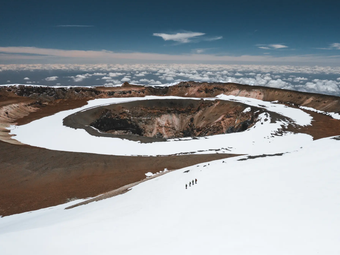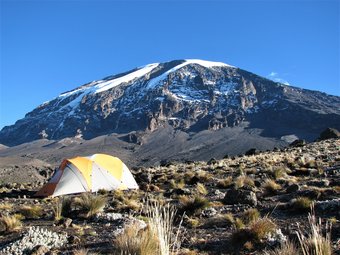Great animal migration safari
4 days— The Great Migration in Serengeti National Park
$1800-1900 USD
pp
Safari summary
The Great Migration is one of the most breathtaking wildlife spectacles on Earth, taking place annually across the vast plains of Serengeti National Park in Tanzania and the Maasai Mara Reserve in Kenya. This natural phenomenon involves the movement of over 1.5 million wildebeest, along with hundreds of thousands of zebras, gazelles, and other herbivores, as they traverse the ecosystem in search of fresh grazing land and water.
The Cycle of the Great Migration
The migration is a continuous cycle driven by seasonal rains, ensuring survival for the animals. The journey covers approximately 800 to 1,000 kilometers (500 to 620 miles), and it is fraught with challenges, including predator attacks, river crossings, and harsh weather conditions.
About this tour
| Tour type | Custom, tailor-made, private | |
| Main focus | Game drives | |
| Activity level | Easy activity | |
| Best months | All months | |
| Countries | ||
| Parks |
Fine details
Safari highlights
- Photography safari—with professional guide
What’s included?
- Accommodation
- Airport transfers
- Meals
- Park fees
What’s not included?
- Alcoholic beverages
- Hot air balloons
- Internal flights
- International flights
- Premium alcoholic beverages
- Private vehicle and driver
- Spa treatments
- Tips and gratuities
- Visas
Itinerary
Southern Serengeti to Ndutu
Serengeti
The migration begins in the Ndutu region and the southern Serengeti, where the wildebeest gather to give birth. Around 500,000 calves are born within a short period, usually from January to March. This attracts predators such as lions, cheetahs, and hyenas, which take advantage of the vulnerable young. Despite the dangers, the abundance of food and water makes this a crucial starting point for the journey.
Grumetic River
Serengeti
As the rainy season ends, the herds move northwest towards the central Serengeti and the Grumeti River. This leg of the journey presents new challenges, including the Grumeti River crossings, where giant crocodiles lie in wait. The vast herds are also targeted by leopards, lions, and hyenas, making survival a constant struggle.
Northern Serengeti( River Crossing
Serengeti
By June and July the herds reach the Serengeti’s northern regions near the Mara River, one of the most dangerous points of the migration The Mara River Crossing is the most dramatic and iconic moment, where thousands of animals plunge into the crocodile-infested waters in a desperate bid to reach the Maasai Mara in Kenya. Many are swept away by strong currents while others fall prey to predators. However, those that survive find lush grazing lands in the Maasai Mara where they remain for months
Return to the Serengeti
By October, the short rains begin in Tanzania, prompting the herds to move southward from the Maasai Mara back into the Serengeti. This reverse journey follows the same dangerous route, with the herds once again braving the Mara and Grumeti rivers before returning to the plains of the southern Serengeti in time for the next calving season.
Here are the latest tours by Lioness Tours and Safaris.
day trip climbing Kilimanjaro
Tour by: Lioness Tours and Safaris
Countries:

Focus: None
Mount kilimanjaro climbing
Tour by: Lioness Tours and Safaris
Countries:

Focus: None
Great Animal Migration
Tour by: Lioness Tours and Safaris
Countries:

Focus: Game drives
Cleanliness of vehicle
Meet and greet team
Quality of itinerary
Responsiveness of staff



